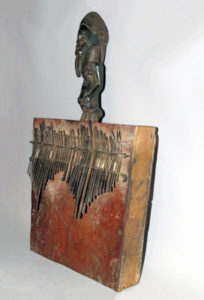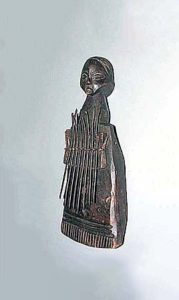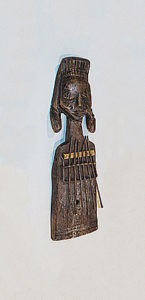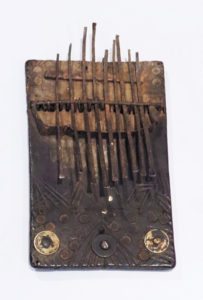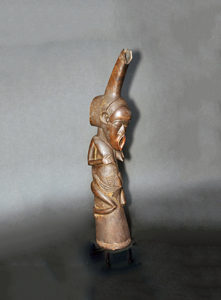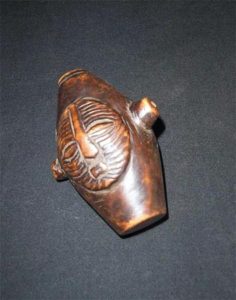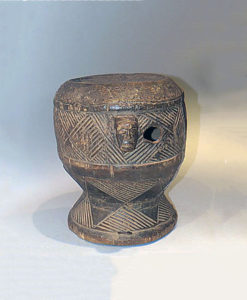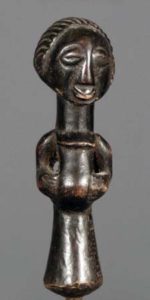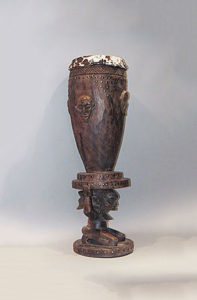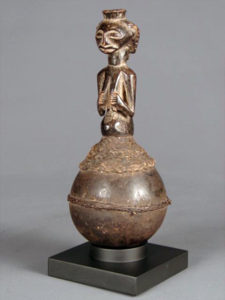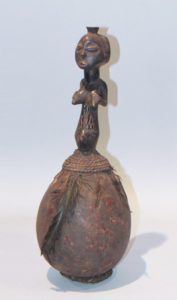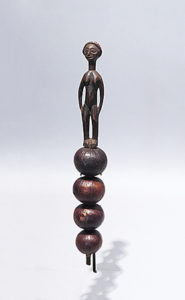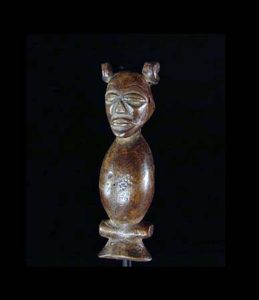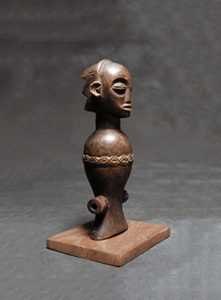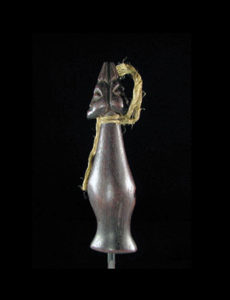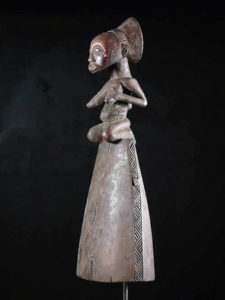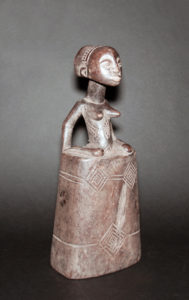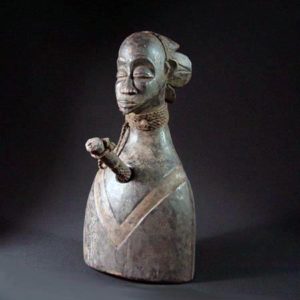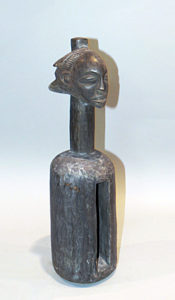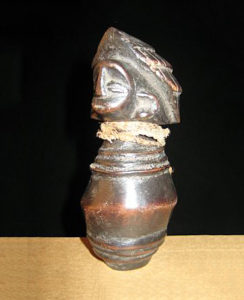Luba
The Luba empire was founded in 1585 in the Upemba depression by King Kongolo. This kingdom rapidly expanded to encompass all the territories on the upper left bank of the Lualaba River. At its peak, about one million people, living in several tribes, were paying tribute to the Luba king. At the end of the 19th century, with the advance of the Ovimbudu people from Angola and the raids of the East African Muslim slavers, the empire weakened and, in fact, collapsed when Belgian colonials took control. The legacy of the great empire is still recognizable in the region today, where local customs and art styles often reflect a strong Luba influence.
The Luba empire economy was complex – it was based on a tribute system and the redistribution of resources. The production of salt and iron was under the king’s control.
The iconographic representation of women in Luba sculpture is widespread and correlates to the important role of women in Luba society. Of the several mask types used by the Luba, one of the better known is “kifwebe,” a mask elaborated with whitened parallel grooves on a dark ground. The “kifwebe” masks, used by the secret society of the same name, originated in this territory.
The primary religion was based on veneration of the ancestors and involved paying tribute to the spirits.
Source:
Baquart, Jean-Baptiste. The Tribal Arts of Africa. New York: Thames and Hudson Inc.

